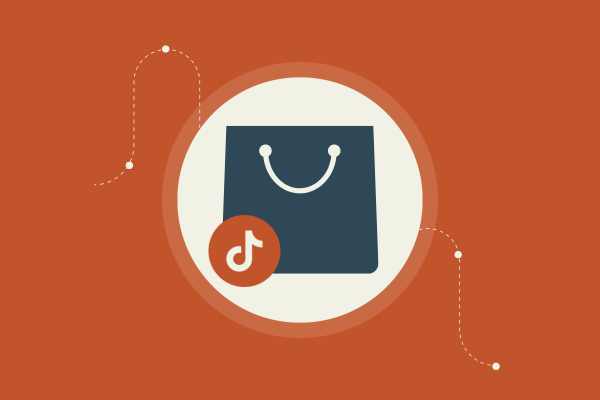How Smart Pricing Strategies Can Boost Your eCommerce Sales: Crush It with Simple Tactics
Cracking the code to boost your eCommerce sales is closer than you think. You just need the right pricing strategy. Smart pricing strategies can ignite your sales and take your profits through the roof. Imagine charging exactly what your customers are willing to pay. More sales, more profit, less stress.
In the fast-paced world of eCommerce, adapting quickly is key. Being stuck with static prices is like watching your competition fly by. Dynamic pricing adapts to the market changes, letting you stay ahead. You’re making tweaks day-to-day based on demand and customer behavior. It's like having a secret weapon.
Unpacking Smart Pricing
Smart pricing can transform your eCommerce game. It's about understanding pricing strategies, the psychology behind them, and how perceived value plays a part. Let’s break it down.
The Psychology Behind Pricing
Why do people choose one product over another? It’s often due to psychological pricing tricks.
For example, prices ending in ".99" make the item feel cheaper. This is because the brain reads from left to right and doesn’t fully process the last digit. So, $29.99 feels way less than $30.
Another trick is offering bundles. By putting products together, customers think they’re getting a deal, even if the bundle price is the same as buying items separately. Use these tactics to make pricing work in your favor.
Key Smart Pricing Models
Time to dig into pricing strategies that drive results. Value-based pricing is gold. Forget about cost; focus on what value the product brings to your customer. Customers pay for what they think it's worth.
Dynamic pricing adjusts based on demand and market trends. Think airlines and hotels. Use software to implement smart pricing rules that keep you competitive.
Also, segmented pricing. Different customers, different prices. Offering special deals to loyal customers can boost sales. These strategies let you adapt and thrive.
Understanding Perceived Value
Perceived value is everything. If a customer thinks your product is high quality, they’ll pay more. Improving your brand image and adding features can enhance this value.
Smart pricing helps here. Set prices according to how customers view your product, not what it costs to make.
Highlight unique benefits or offer exclusive access. People love feeling they’re getting something special. When they believe your product’s worth it, they’ll happily reach for their wallets.
Remember, it’s not just about numbers. It’s about creating an experience that resonates with your audience.
Optimizing for Profit
Maximizing profits in eCommerce is about hitting the sweet spot between keeping costs low and pricing high enough so customers still buy. By understanding what customers are willing to pay, while covering your costs, you can increase your profit margin and scalability.
Balancing Costs and Customer Willingness to Pay
Know your numbers. Start by figuring out your production costs. That's everything from materials to shipping. Keep it tidy and streamlined. Once you have that, think about price elasticity. How much can you change the price before your customers change their minds?
It’s like walking a tightrope. If your prices are too high, customers walk away. Too low, and you might not cover costs.
Use data to understand customer behavior. Are your customers bargain hunters or are they ready to pay for premium? Adjust your pricing based on this.
Keep an eye on your competitors. Watch their moves and price your products competitively. This can help you stay in the game without leaving money on the table.
Crafting a Profit-Focused Pricing Strategy
Your goal? Maximize profit. Design your pricing strategy to do just that. You need a mix of science and art here.
First, decide on your profit margin. What works for you isn't what works for everyone else. That’s key.
Consider psychological pricing tactics, like pricing something at $9.99 instead of $10. It’s simple, but it works.
Use strategies like cost-plus pricing, where you add a markup to your cost. This helps cover any unexpected costs and keeps your profits healthy.
Also, try dynamic pricing. Adjust prices based on demand, supply, and competitor prices. It's like having a virtual assistant adjusting prices for the best results.
Dynamic Pricing in Action
Dynamic pricing is like a secret weapon in eCommerce. It helps you be flexible with your prices, letting you tackle market changes and real-time demands like a pro.
Leveraging Market Conditions
Dynamic pricing isn't set in stone. It's fluid, just like the market. By adjusting prices based on market conditions, you can maximize your profits.
Let’s say there’s a surge in demand for a product. With dynamic pricing, you can raise prices to capitalize on this trend.
The competition's got you on your toes? No problem. You can tweak your prices to stay competitive. Stay sharp. You’re tracking competitors and market trends to keep your strategy aligned.
Big sale holidays, like Black Friday or Cyber Monday, require a unique approach. Use seasonal pricing to adjust your prices and stay in the game. Dynamic pricing strategies help ensure you always have a competitive edge.
Responding to Real-Time Demand
Alright, imagine this: a new gadget hits the market, and everyone wants one. Bam! You can boost prices because there’s a real demand. But it’s not all about jacking up prices. Sometimes, lowering prices during a low demand period can boost sales overall.
Tools today, like smart pricing software, let you see market demand in real-time. You adjust pricing instantly. It’s like magic. Being quick to respond means more sales and happier customers.
Using real-time data, you spot trends before others do. Make decisions that grip advantage. Need a reason to adjust prices this way? It protects your margins by aligning cost structures, meeting the market where it stands.
Analyzing the Market and Competition
To boost your eCommerce sales, dive deep into understanding your market and staying ahead of your competition. This is crucial for grabbing more market share and nailing down a killer pricing strategy.
Conducting In-depth Market Research
Market research is your compass. Without it, you're lost at sea. Start by gathering data about your target audience. What do they crave? What's their budget? You gotta know who you’re selling to like you know your favorite sandwich.
Now, don't just stop there. Look at your competition. Who are the big dogs, and who's nipping at your heels? Check out their prices, product offerings, and market share. Find gaps you can fill.
Use the information to fine-tune your strategies. Look into smart pricing strategies and competitive pricing. Get into the nitty-gritty details. Numbers don’t lie.
Staying Ahead of the Competition
Stay sharp and on your toes. Competitor-based pricing is more than just matching prices. You need a strategy that reacts to their moves and sets you apart. Are they using penetration pricing to lure buyers? Maybe you should too.
Keep tabs on market trends. If competitors raise prices, you might consider the same. Watch how they react to new products and services.
Use AI-driven platforms for competitive pricing analysis. This tech can save you loads of time and keep your prices competitive.
Don’t forget about branding and value. It's not always about price. Sometimes, it's about who tells the best story.
Leveraging Customer Insights
When you tune into customer insights, you're tapping into gold. They tell you how much people are willing to pay and what makes them loyal. It's all about understanding what drives customer satisfaction and experience. Let’s break down how you can use these insights to boost your pricing strategy and outsmart the competition.
Mining Customer Data for Pricing Clues
To win at pricing, dig into your customer data. Look for patterns showing how much people are willing to pay. This isn’t about guessing; it’s data-driven. Use surveys, purchase histories, and even social media chatter.
Need more info? Customer feedback is a treasure trove. Analyze reviews to see what they love or hate about your pricing. Discovering what makes them tick can guide your strategy.
Spot trends by checking out which products sell well and at what price points. This helps in identifying the ideal pricing zones. Do customers jump at discounts or do they value premium pricing for perceived quality? Use this to make informed decisions that enhance customer perception.
Customer Perception and Pricing
How do customers see your brand? Perception can make or break your pricing approach. If they see value, they're likely to pay more. Aim to align your pricing with what they perceive as fair.
Communicate clearly why a product is priced the way it is. Transparency can increase trust and customer loyalty. Showcase benefits, whether it's quality or exclusivity, to improve their willingness to pay.
You must monitor customer satisfaction. Happy customers return and bring friends. Consider loyalty programs too. This improves customer experience and reinforces positive perception. Always connect pricing with the benefits it brings to their lives. That way, you’re not just selling products, but also building lasting relationships.
Boosting Sales Volume
Want to boost your sales? You gotta get creative with your pricing. Bundle deals and strategic discounts can help drive traffic, increase conversions, and get that average order value up. Let’s dive into how you can make this work.
Creating Value Through Bundle Deals
Bundle pricing is your secret weapon. It’s like telling your customers they’re getting a steal. Imagine selling three items together at a price that’s lower than buying them separately. It feels irresistible. This boosts sales because customers see extra value.
Bundles also increase your average order value. When someone buys more than one item, it adds up quickly. Plus, it clears out inventory you want to move. It’s a smart eCommerce pricing strategy that brings in more cash.
You attract new customers who are always looking for a deal. They come for the bundle and might stick around for more. Use data to pick the right products to bundle. You want to choose those that complement each other and make sense to buy together.
Driving Sales with Strategic Discounts
Discounts aren’t just about slashing prices. It’s about timing and strategy. You got to know when to throw one out there.
Say you have a seasonal product. A well-timed discount can clear those shelves fast.
Everyone loves a good deal. Discounts create urgency. A "limited time only" offer can really drive sales and conversions. Offering small discounts can attract new customers who might not pay full price.
Make discounts specific to drive certain actions. You can offer a percentage off for first-time buyers. Or provide an extra item for free when customers meet a spending threshold. This way you increase sales without slashing your margins too deep.
链接到 Guide to Smart Pricing for Better Sales and Profits, 11 Pricing Strategies for eCommerce to Implement Today.
Implementing Tactical Pricing Adjustments
Tactical pricing requires you to think on your feet. It's about leveraging demand-based pricing and understanding consumer psychology to set prices that move the needle. For instance, you can use dynamic pricing rules to react quickly to market changes.
If demand spikes, adjust prices upward. If competitors cut prices, respond with strategic discounts without slashing your margins. You can also use techniques like cost-plus pricing to ensure every sale is profitable. Keeping tabs on competitor moves can help you stay competitive while maintaining healthy profit margins.
Testing and Measuring Pricing Changes
A/B testing is your best friend here. It's crucial to measure how changes impact your bottom line.
Run small, controlled tests on different pricing models to see what resonates. If a particular price point boosts sales, you’ve hit gold.
You can also use data analytics to track how pricing tweaks affect sales and customer engagement. Price testing can provide insights into what your customers are willing to pay. This way, you can refine your strategy over time, ensuring your prices are always aligned with market demands and consumer expectations.
Scaling for Growth
When you're ready to scale, you must master the balancing act of smart pricing. A good strategy can boost your sales and keep costs down, allowing room to expand without losing profitability.
Adapting to Expanding Business Horizons
As your business grows, you face ever-changing market dynamics. To keep up, stay flexible with your pricing.
Regularly review your pricing strategy to ensure competitive prices that resonate with your audience. This isn't just about slashing prices. It's about knowing the sweet spot where your customers see the value and you see increased sales.
You should also test new pricing models like dynamic pricing. Adjusting prices based on demand or market trends can help you capitalize on peak sales times.
Use data-driven decisions to adapt to customer needs and emerging trends. Keep an eye on your cost of goods sold to ensure they align with your pricing strategy. Being agile with your prices keeps you at the forefront of your retail business growth.
Sustainable Pricing for Long-term Growth
To ensure long-term growth, your pricing must be sustainable. This means striking a balance between attractive prices and maintaining profitability.
E-commerce pricing strategies should focus on value rather than just cost-cutting. Offer competitive prices without eroding your margins.
Leverage psychological pricing techniques to influence consumer behavior. For instance, using anchor pricing can highlight savings and draw customers in. Such strategies can boost sales while keeping your business sustainable.
Focus on customer perception. When customers see genuine value, they stick around, driving long-term growth.
Your goal? Sustain growth without burning out resources. Prioritize long-term profitability over short-term gains.







